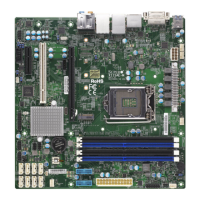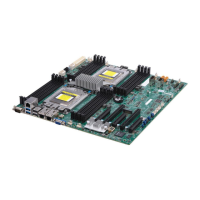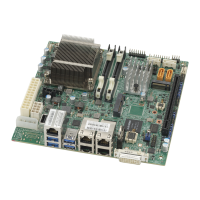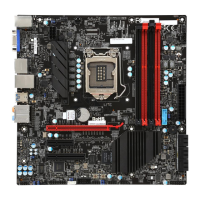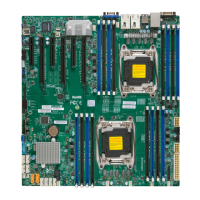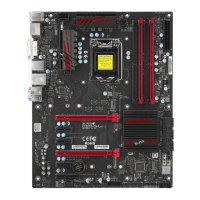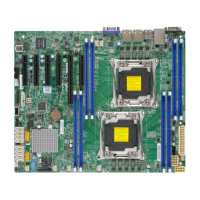Do you have a question about the Supermicro M12SWA-TF and is the answer not in the manual?
Manual's purpose, audience, and content overview.
Details on the motherboard's capabilities and target users.
Explains symbols and formatting used in the manual.
Overview of key connectors, jumpers, and LEDs on the motherboard.
Describes the CPU and chipset specifications and features.
Highlights unique features like AC power loss recovery.
Covers voltage, temperature, and fan monitoring capabilities.
Explains Advanced Configuration and Power Interface features.
Discusses the importance of a stable power source.
Details the Super I/O chip and its functionalities.
Safety precautions for handling ESD sensitive components and unpacking.
Step-by-step guide for physically installing the motherboard into a chassis.
Detailed instructions for installing the CPU and its associated heatsink.
Information on supported memory types and the procedure for installing DIMMs.
Identification and description of all external I/O ports on the motherboard.
Pin definitions for front panel connectors like power and reset buttons.
Explanations of power connectors (ATX, CPU) and their pinouts.
How jumpers work and specific settings for CMOS clear, HD Audio, LAN, USB.
Explanation of various onboard LEDs and their status indications.
General steps to diagnose and resolve system boot, power, or video issues.
Guidelines for contacting Supermicro support and information needed.
Answers to common questions about BIOS, memory, and OS installation.
Process and requirements for obtaining RMA and returning products.
Step-by-step guide for safely removing and installing the CMOS battery.
Overview of the AMIBIOS setup utility, navigation, and hot keys.
Details on the BIOS Main screen, system date/time, and BIOS version display.
Comprehensive settings for CPU, memory, PCIe, network, and power management.
Configuration of Intelligent Platform Management Interface (IPMI) settings.
Managing SMBIOS event logs, boot events, and time windows.
BIOS security features including administrator passwords, secure boot, and key management.
Configuring boot order priorities, deleting boot options, and UEFI application boot.
Options for saving changes, restoring defaults, and exiting the BIOS setup.
Guide for installing Windows OS, including RAID configuration and driver loading.
Instructions for downloading and installing essential system drivers and utilities.
Overview of SuperDoctor 5 for system health monitoring and management.
Information on IPMI support and related BIOS settings for remote management.
Warnings and instructions for handling and replacing the system battery safely.
Guidelines for responsible product disposal according to national laws and regulations.
Explanation of UEFI BIOS, its architecture, and recovery capabilities.
Process for recovering the main BIOS image using a critical recovery BIOS block.
Step-by-step guide to recover the BIOS from a corrupted state using a USB drive.
| Brand | Supermicro |
|---|---|
| Model | M12SWA-TF |
| Category | Motherboard |
| Language | English |


